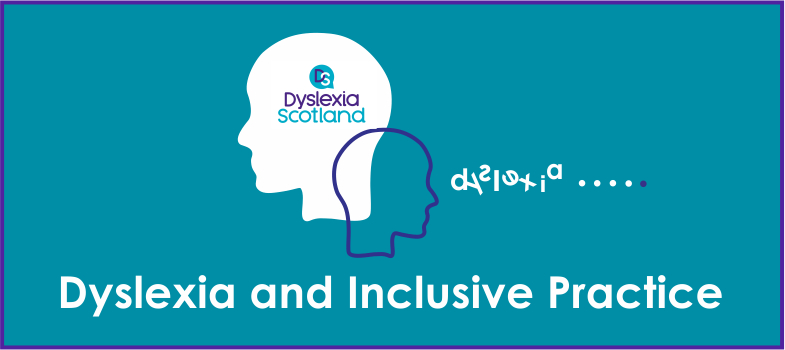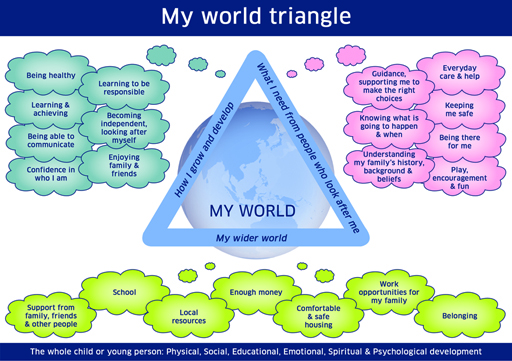1.2 Assessment within Curriculum for Excellence
Recap Module 2
Section 1.1
Support for all learners begins within the classroom and is provided by the classroom teacher who holds the main responsibility for nurturing, educating and meeting the needs of all pupils in their class, working in partnership with support staff to plan, deliver and review curriculum programmes. Support for children and young people with dyslexia and also those who experience literacy difficulties and other additional support needs is achieved through universal support within the staged levels of intervention.
Gathering assessment information together to use in a dyslexia pathway is not the sole responsibility of a Support for Learning /ASN teacher. It is a collaborative process.
Further detailed information on assessment and dyslexia will be discussed in section 2
Is there a connection between Curriculum for Excellence assessment and assessment for dyslexia?
The Code of Practice (Third Edition) 2017 states that:
‘assessment is seen as an ongoing process of gathering, structuring and making sense of information about a child or young person, and his/her circumstances. The purpose of assessment under the Act ultimately is to help identify the actions required to maximise development and learning. Assessment plays a key role in the authority’s arrangements for identifying children and young people who have additional support needs and who, of those, require a coordinated support plan. Assessment is a process supported by professionals and parents in most circumstances. It identifies and builds on strengths, whilst taking account of needs and risks. The assessment process also assumes the negotiated sharing of information by relevant persons and agencies.’
Assessment is a dynamic process, with the child or young person at the centre. As a result, it should not be divorced from other aspects of the child’s life either at school, home or in the community as illustrated in the My World Triangle above. It will usually include discussion with parents and professionals involved with the child or young person, for example, class teacher, support for learning staff, speech and language therapist, social worker, foster carer or residential worker. It should build on other assessment information already available. It may involve observation in one or more day-to-day situations and/or individual work with the child or young person as required. The education authority should always endeavour to seek and take account of the views of the child or young person, unless there are particular circumstances to prevent this happening, or which make it inappropriate.
Curriculum for Excellencesets out the values, purposes and principles of the curriculum for 3 to 18.
The assessment system in Scottish schools is driven by the curriculum and so necessarily reflects these values and principles. The 2011 document ‘A Framework for Assessment’ was designed to support the purposes of Curriculum for Excellence and highlights that the purposes of assessment are to:
- Support learning that develops the knowledge and understanding, skills, attributes and capabilities which contribute to the four capacities
- Give assurance to parents, children themselves, and others, that children and young people are progressing in their learning and developing in line with expectations
- Provide a summary of what learners have achieved, including through qualifications and awards
- Contribute to planning the next stages of learning and help learners progress to further education, higher education and employment
- Inform future improvements in learning and teaching
Assessment is therefore an integral part of learning and teaching which takes place in each classroom each day. It helps to provide a picture of a child’s or young person's progress and achievements and to identify next steps in learning. Assessment of a learner’s progress and achievement is based on a teacher’s assessment of their knowledge, understanding and skills in curriculum areas. Teachers assess learning using a variety of approaches and a wide range of evidence.
Figure 5 provides an overview of Effective ongoing assessment which is about:
The principles for the assessment of additional support needs are no different to those for Curriculum for Excellence. As highlighted in module 2 section 1.4 literacy, numeracy and health wellbeing are the responsibility of all teachers and therefore all staff have a very valid and important contribution to the process of identification and support for dyslexia. The information which is gathered on a daily basis by class teachers as part of their curriculum moderation and assessment will provide a significant contribution to the identification process of dyslexia. This information gathered reflects the learner’s presentation in class and can include examples of:
- Observations
- Pieces of class work – examples of free handwriting to evaluate spelling, structure
- Conversations about text to evaluate reading comprehension
- Comparison of verbal and written ability
- Organisational skills
- A non ‘measureable’ piece of assessment that is recorded can be as important. For example the learner’s sense of directionality or ability to throw a ball accurately.
- Information shared by parents and the learner
Education Scotland’s Curriculum for Excellence (CfE) Statement for Practitioners [Tip: hold Ctrl and click a link to open it in a new tab. (Hide tip)] (August 2016) stated that thetwokeyresourceswhichsupportpractitioners toplanlearning, teaching and assessmentare the ExperiencesandOutcomes (Es and Os) and Benchmarks.
Positive aspects of dyslexia − Strengths of dyslexia providing a positive impact on the four factors


